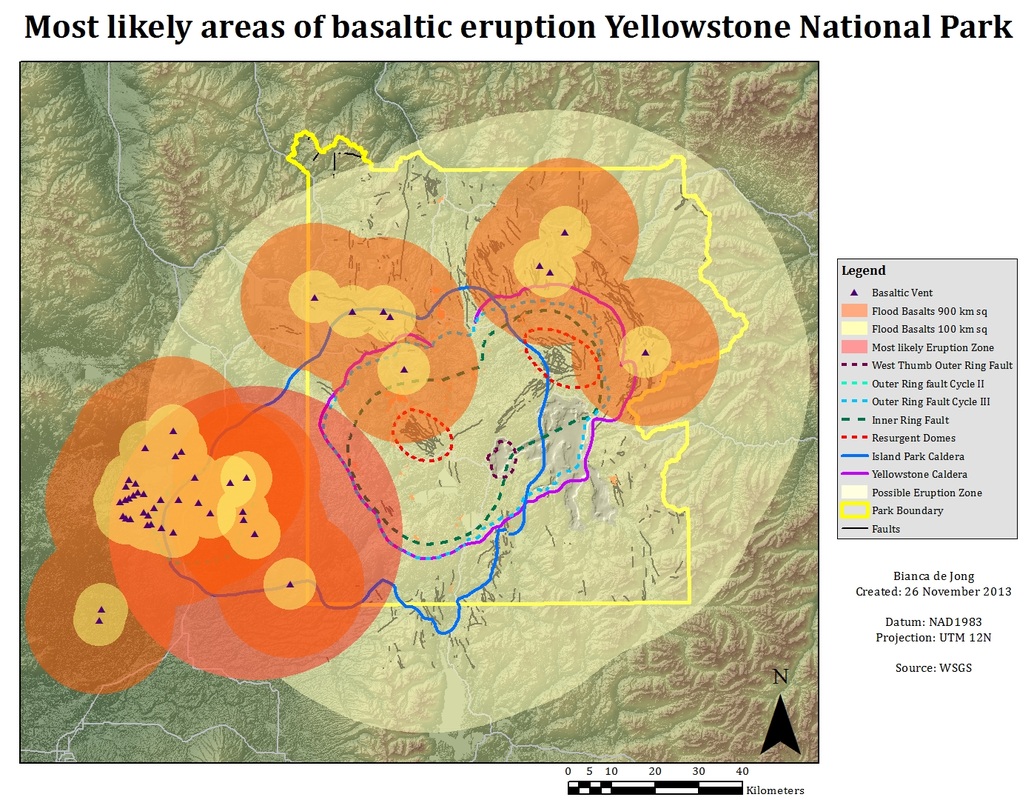

Modeling of assimilation and fractional crystallization (AFC) processes in seven basaltic lava flows filling the 2-Ma Big Bend Ridge Caldera at Mesa Falls, Idaho, near the eastern end of the hotspot track suggests that the crustal contribution to the Nd and Hf concentration budgets increases systematically with time and was significant. The Columbia River Basalt Group is the youngest, smallest and one of the best-preserved continental flood basalt province on Earth, covering over 210,000. This observation shows that there is significant lithospheric control on the isotopic compositions of both basalts and rhyolites associated with the Yellowstone hotspot track. Varying between a high of +11.3 in parts of the CRB and a low of −8.3 in some of the late SRP basalts, the new ε Hf values are geographically controlled, similar to the shift first documented with Sr and Nd isotopes across the “0.706 Sr line,” which marks the boundary between thin- accreted young ocean lithosphere and arc terranes in the west to thick, old cratonized crust in the east. The isotopic compositions for all three elements span much of the compositional range observed in mantle-derived basalts worldwide.

We have generated the first Hf isotopic data on basalts in this large igneous province along with bulk-rock trace-element abundance patterns and Sr-Nd isotopic ratios to assess the hypothesized kinship with co-located rhyolites throughout the hotspot track. The Yellowstone hotspot track in the northwestern US has a 17-myr history that began with eruption of the voluminous Columbia River basalts (CRB), and produced an eastward track with the bimodal rhyolite and basaltic eruptive centers of the Snake River Plain (SRP) as the North American Plate drifted westwards. One possible reason for present day geothermal activity at yellowstone national park and the extensive flood basalts of the columbia river plateau is. YELLOWSTONE volcanos last supereruption, more than 640,000 years ago, would be nothing compared to a future flood basalt event, which previously produced the largest and most devastating.


 0 kommentar(er)
0 kommentar(er)
